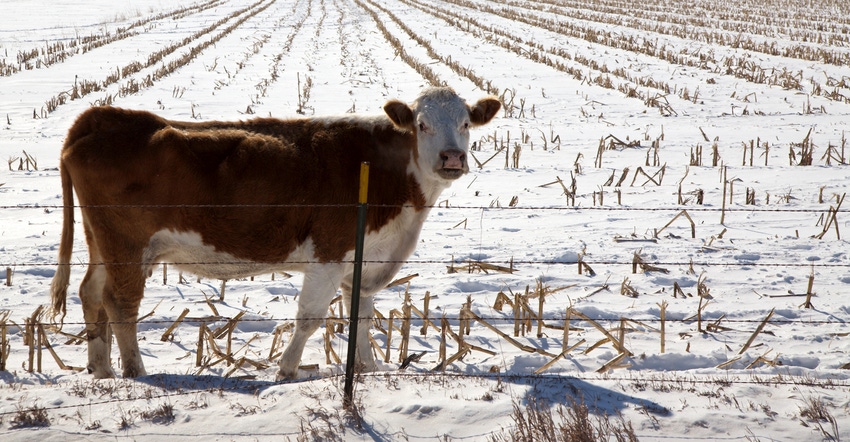
This summer and fall were one of the wettest on record. Many farmers will struggle having enough of their own stored feed this winter.
Corn residue can be baled and used as feed, but what about extending the grazing season on that same corn residue? Apparently, it’s a pretty good alternative, according to Penn State Cooperative Extension.
Grazing cattle will consume the corn left behind from harvest, which can reduce the amount of volunteer corn the following growing season.
For every bushel of corn there are approximately 18 pounds of stem, 16 pounds of husk and leaves, and 5.8 to 6 pounds of cobs left as residue left in the field, according to the University of Nebraska–Lincoln beef Extension program.
Depending on yield and cow size, 1 acre of stalks can support a cow for 30 to 60 days, according to Mike Baker, Cornell beef Extension specialist.
Cattle also leave behind manure, which provides a good fertilizer source for the field.
Extending the grazing season can also save money.
“I have not sat down with real numbers and done this," says Tara Felix, Penn State beef extension specialist. "However, multiple studies have shown that grazing is always a cheaper alternative to feeding harvested forages. When you consider harvested corn stalks, you also have to account for a faster depreciation of the equipment because harvesting corn stalks is so hard on equipment."
But grazing corn residue takes planning. So, here are five ways to ensure maximum benefits:
1. Implement a grazing management system. Cattle are very selective with what they eat. Baker says cattle will eat the grain, husks and leaves first, which are the most palatable and nutritious. But eating too much grain can lead to acidosis, which can be fatal.
Penn State Extension suggests putting in a strip-grazing system to manage plots and to provide a fresh allocation of forage.
Baker says temporary electric fences are a good option. They can be light-gauge wire, electrified tape or braided twine. Twisted polywire, he says, is less visible and can be easily broken by deer. Solar-powered fence chargers can be used if electricity isn’t available.
Baker says cattle can be trained quickly if there is enough food and water available.
2. Let them graze early. According to Penn State Extension, cattle can graze cornfields that have up to 4 to 6 inches of snow cover. But they won’t be able to graze fields that are covered with ice. So, it’s better to start grazing as soon as possible before the real cold weather begins. Having an emergency feed supply such as hay or silage is crucial in case of big winter storms or other weather events.
3. Don’t graze winter thaw. Felix says that letting cows graze during winter thaw is not a good idea since the quality of the grain will be depleted and likely will not match the cows’ nutrient requirements.
4. Provide enough water. Baker says that a 1,400-pound dry cow will drink about 10 gallons of water per day. Bringing water in is necessary if a nearby source isn’t available, he says.
5. Let the right cows graze. Cows have different nutrition requirements depending on if they are dry, spring-calving or first-calving heifers. Penn State Extension says spring-calving cows and dry cows should maintain body weight or even gain weight by grazing corn residue.
First-calf heifers, though, will need additional supplementation — 3.5 pounds of whole soybeans, 4.5 pounds dry brewers grains or 3.5 pounds dried distillers grains per head per day.
Along with this, salt, mineral and vitamin A supplements are always recommended.
Fall-calving cows will also need an additional 4.5 pounds a day of a supplement that is 30% protein and 90% total digestible nutrients, or TDN, on a dry-matter basis, according to Penn State Extension.
Spring-born calves will need an extra supplement of DDGS, whole soybeans or dry brewers grains to meet their nutritional needs and daily weight-gain goals.
About the Author(s)
You May Also Like






